Summer sale discount off 50%! Shop Now
Currency
Inside the Atelier: Tools of the Trade
- Home
- ReplicaX Blog | Style Guides and Insider Secrets
- Inside the Atelier: Tools of the Trade
Inside the Atelier: Tools of the Trade
Sep 3, 2025
By
Sophia Whitmore
0 comment(s)
Inside the Atelier: Tools of the Trade
Step into a Hermès workshop, and you’ll notice something striking: the space isn’t dominated by machines or conveyor belts, but by simple tools arranged with quiet precision. Hermès artisans rely on a handful of instruments—many unchanged for centuries—to transform raw leather into the world’s most coveted bags.
Every knife, needle, and burnisher in the atelier serves a specific role in a process that values accuracy over speed, and permanence over efficiency. The elegance of the end product is rooted in this discipline: craft measured in millimeters and hours, not mass production and shortcuts.
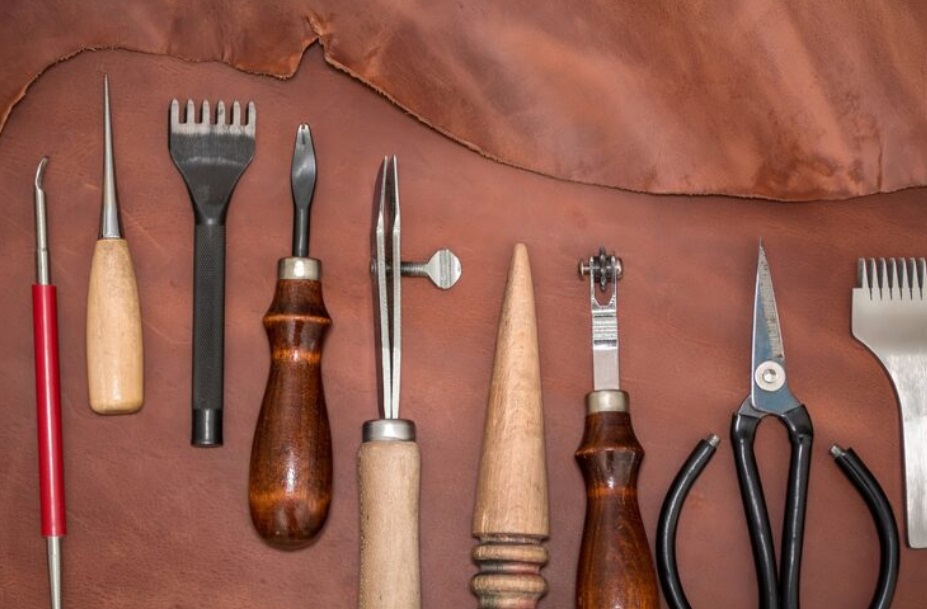
The Philosophy Behind Hermès Atelier Tools
At Hermès, tools are not just implements—they are an extension of the artisan’s hand. A paring knife becomes as familiar as a pen in hand; a burnisher polishes not just leather, but technique.
Where industrial fashion brands favor automation, Hermès champions restraint. Machines can produce more bags in less time, but they cannot replicate the warmth of a hand-polished edge, the character of a hand-pulled stitch, or the intuition an artisan develops after years of training.
This philosophy traces back to the maison’s roots in 1837, when Thierry Hermès opened a harness workshop in Paris. The saddler’s tools—knives, awls, mallets—remain largely unchanged, carrying equestrian heritage into every Birkin, Kelly, or Constance bag made today.
Essential Hermès Atelier Tools
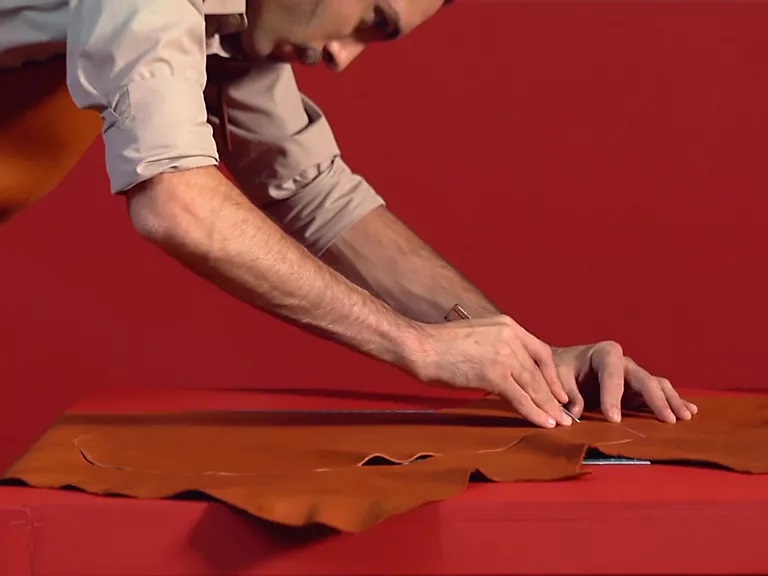
1. Paring Knife
The paring knife trims and thins leather with surgical precision. It’s used for skiving, the process of shaving leather edges so layers join seamlessly. The knife must be razor-sharp, honed daily on a whetstone. One wrong angle can scar the hide, forcing the artisan to discard a piece that may have taken weeks to source.
What makes this knife unique is not its shape—it looks simple, almost ordinary—but the way it is maintained. Many artisans spend years perfecting how they sharpen their blades, adjusting the angle of the edge to suit their personal cutting style. In an atelier, you’ll often see knives lined up neatly on a bench, their blades glinting, waiting to transform leather into form.
2. Mallet and Pricking Irons
Stitching begins not with thread but with holes. Pricking irons, aligned like combs, are struck with a mallet to pierce equidistant slots along leather edges. Each tap sets up the saddle stitch that defines Hermès craftsmanship. Unlike machine stitches, these marks create rhythm: a heartbeat embedded into the bag.
The mallet itself is often wrapped in rawhide or covered with a softer material so it leaves no mark on the steel. Over time, both mallet and irons wear in unique ways—tiny imperfections that, paradoxically, give Hermès stitching its consistency.
3. Saddle Stitch Needles
Two needles, one thread. Each hole receives a crisscross of waxed linen pulled tight by hand. This saddle stitch, developed for saddlery, is nearly impossible to replicate by machine. If a thread breaks, the stitch won’t unravel—an invisible insurance policy that explains why Hermès bags can be worn daily for decades.
A single line of stitches may take hours. The artisan pulls the thread with equal force on each side, developing a rhythm almost musical in nature. This meditative process is part of what makes Hermès bags so distinct: patience is woven into every seam.
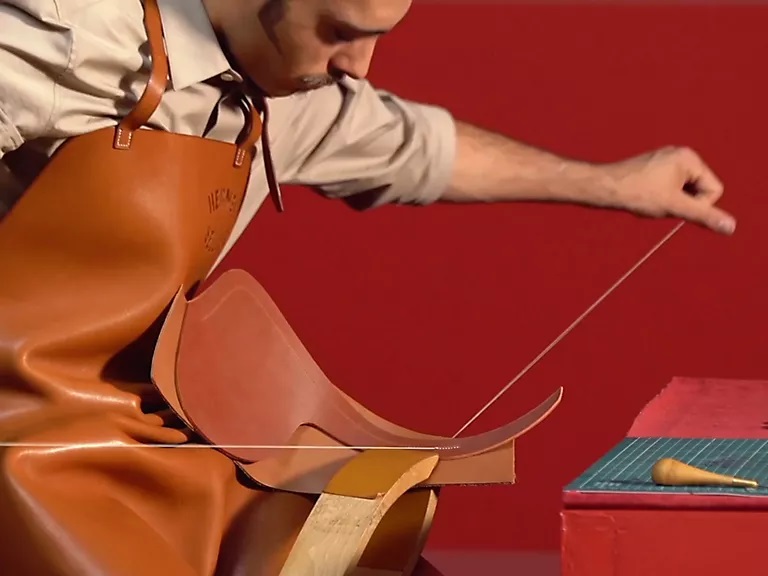
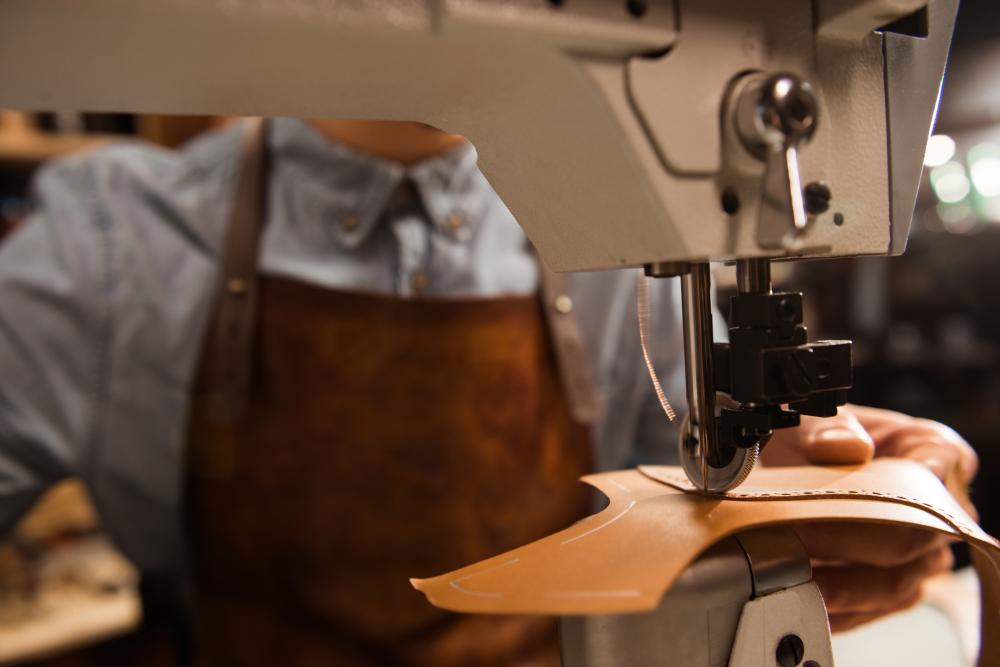
4. Edge Burnishers
After stitching, raw edges are tamed with burnishers made of wood, bone, or even agate. Heat, pressure, and beeswax seal the fibers into a glass-smooth line. The burnished edge is one of the quiet luxuries of an Hermès bag: you feel it when you run a hand along the seam, even if you don’t consciously notice it.
Burnishers require constant care. If they lose their smooth finish, they can scar the leather instead of polishing it. Some artisans inherit burnishers from mentors, tools worn silky after decades of use, carrying with them not just function but lineage.
5. Cutting Dies, Rulers, and Compasses
Leather must be cut to within fractions of a millimeter. Steel dies may be used for common shapes, but rulers and compasses remain indispensable for irregular or curved pieces. This is where geometry meets artistry: a bag’s elegance depends on proportional harmony set at the cutting table.
Unlike textiles, leather cannot be stretched or eased into place. Once cut, every edge is final. That’s why tools of measurement are so critical—an error of half a millimeter will haunt the bag through every stage of construction.
6. Awls and Scratch Compasses
Awls are needles without thread, piercing leather for delicate stitching or guiding hardware placement. Scratch compasses draw invisible lines, marking fold lines or alignment points. These tools may leave faint impressions, but they vanish into the finished work—like scaffolding for a sculpture.
Every artisan has their own favored awl, sharpened to just the right point. It is a deceptively simple tool, yet in the wrong hands it can split a hide or weaken a seam. Precision comes not only from the steel but from the discipline behind it.
7. Waxed Linen Thread
Not a tool in the strict sense, but central to the process. The linen is coated in beeswax, which strengthens fibers and creates a tack that grips the leather. It’s this thread, guided by human hands, that binds the whole construction together.
The choice of thread color is another subtle art. Some Hermès bags use tone-on-tone stitches for seamless elegance, while others feature contrast stitching that highlights the handwork. Either way, the integrity of the bag depends on thread prepared by hand, never synthetic substitutes.
The Bag Making Process in the Hermès Workshop
Understanding the tools is only half the story. The bag making process reveals why Hermès handbags are legendary.
- Leather Selection – Artisans inspect hides for imperfections: scars, uneven grain, or pores too open to polish. Only flawless sections are cut.
- Cutting – With dies or blades, each pattern piece is cut individually. Precision here is vital; any asymmetry will distort the finished shape.
- Skiving – Paring knives reduce bulk at seams so the bag doesn’t feel heavy or stiff.
- Marking & Piercing – Pricking irons and awls define where every stitch will land, dictating not only strength but visual rhythm.
- Stitching – The saddle stitch is performed entirely by hand. Each line may take hours.
- Edge Finishing – Burnishing and waxing give durability and a signature smoothness.
- Assembly & Hardware – Handles, clasps, and locks are attached, often requiring custom tools for each model.
- Final Inspection – The bag is scrutinized from every angle. If even one stitch is off, it doesn’t leave the workshop.
A Birkin can require 20 to 25 hours of uninterrupted labor. One artisan takes responsibility for the entire piece—a contrast to most luxury houses, where multiple workers handle different stages.
Hermès Tools as a Heritage of Craft
Hermès tools embody continuity. The same pricking irons and knives used for saddlery in the 19th century are still used for handbags in the 21st. This unbroken lineage is rare in luxury, where many houses have traded slow craft for faster turnaround.
By refusing mechanization, Hermès preserves not only quality but heritage. Owning an Hermès bag isn’t just buying an accessory; it’s buying into a tradition of skill carried across generations.
Inside the Hermès Workshop
Visiting a Hermès atelier is like entering a sanctuary of craft. The space is quiet, punctuated only by the rhythmic thud of mallets or the soft rasp of a knife. Tools rest neatly arranged, often customized by each artisan.
Light is important—workshops are designed to let in natural daylight, so artisans can judge color and texture accurately. There’s a meditative quality to the work, reflecting the patience it demands.
The atmosphere is neither hurried nor chaotic. Instead, it feels like a blend of discipline and calm, where each artisan becomes part of a collective rhythm. Watching them work, you sense that time slows down—a necessary condition for precision measured in fractions of millimeters.
How Hermès Compares to Other Luxury Houses
Other luxury brands also prize craftsmanship, but few rely as heavily on hand tools as Hermès. For instance:
- Louis Vuitton combines hand-finishing with machine sewing for efficiency.
- Chanel uses advanced technology to cut and assemble pieces, reserving handwork for final detailing.
- Hermès, however, entrusts the entire bag to one artisan with nothing more than basic tools.
This difference explains why Hermès bags are scarce, with waiting lists stretching months or even years. Scarcity is not just marketing—it is the result of a deliberate choice to remain slow.
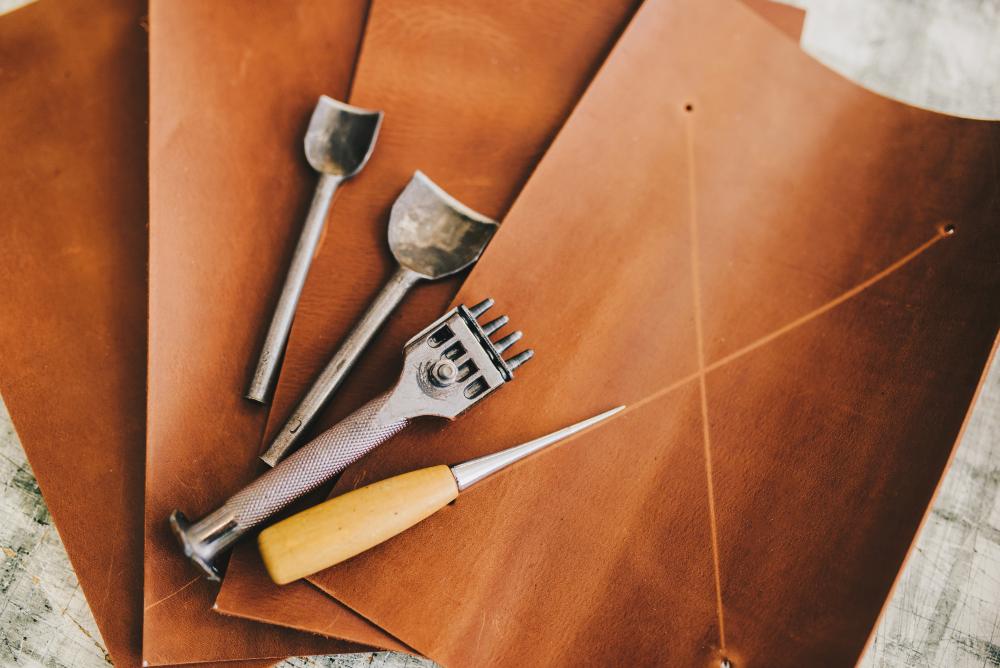
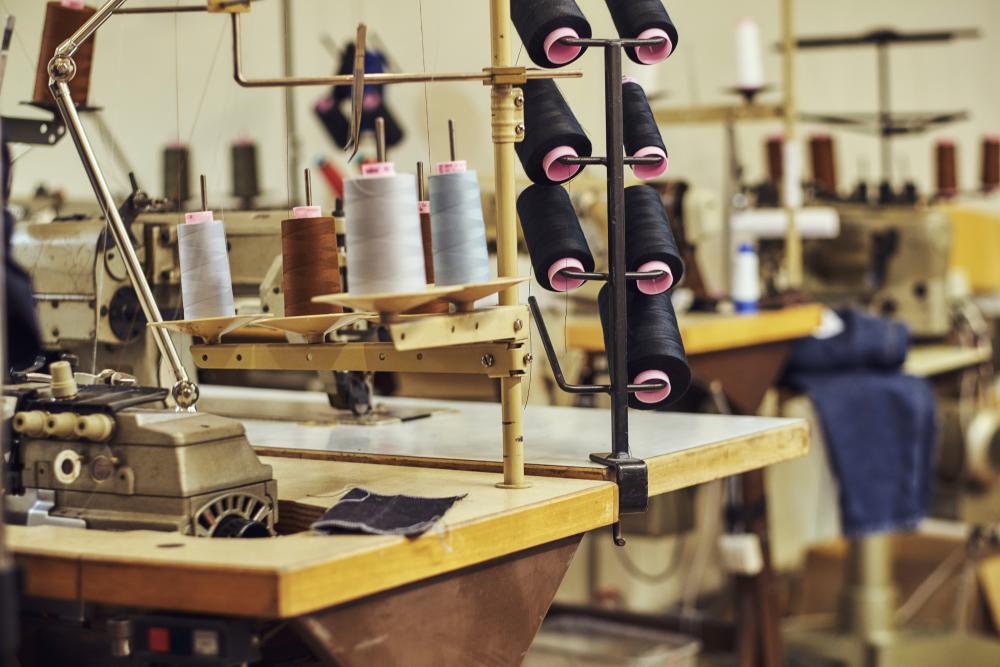
Why Customers Care About Hermès Atelier Tools
For clients, the story of the tools becomes part of the bag’s aura. A Birkin is not just leather and hardware; it is leather cut by hand, pierced with irons, sewn with waxed linen, burnished with bone. These invisible details translate into emotional value—knowing that one pair of hands, guided by simple tools, shaped the object.
Apprenticeship and the Life of Tools
The story of Hermès tools is also the story of the people who wield them. Every artisan begins as an apprentice, spending years mastering not the bag itself, but the tools that create it. In the first months, an apprentice might only be allowed to sharpen knives or prepare waxed thread. This slow initiation teaches respect: a sharp blade is dangerous in untrained hands, and even thread must be conditioned to glide cleanly through leather.
Over time, apprentices graduate to simple tasks like skiving edges or piercing practice scraps. Only after years of repetition do they earn the right to construct a full bag from start to finish. This progression ensures that, by the time an artisan becomes independent, the knife or needle feels like an extension of their body.
The tools, too, grow old alongside the artisan. A burnisher might be polished smooth from thousands of hours of use. A mallet head darkens with the memory of countless strikes. Some artisans modify their instruments, sanding down handles or adjusting angles until the fit is uniquely their own. These personal touches mean that no two Hermès toolkits are identical—each set carries the biography of the hands that shaped it.
For clients, this invisible relationship matters. When they hold a Birkin or Kelly, they are not just holding leather and hardware; they are holding the accumulated years of training, patience, and quiet conversation between artisan and tool. This bond is part of what makes Hermès bags feel alive: they are not stamped out by machines, but coaxed into form by tools that embody both tradition and individuality.
Conclusion
Inside the Hermès workshop, the tools of the trade are deceptively modest. A knife, a mallet, a needle, a burnisher—nothing flashy, nothing automated. But in the hands of a skilled artisan, they become instruments of transformation.
From raw hide to finished icon, the bag making process honors tradition, celebrates patience, and reminds us why Hermès continues to define the meaning of craftsmanship in luxury. Every stitch tells a story, and every tool leaves its mark—not on the bag, but on the legacy of Hermès itself.
Recent Posts